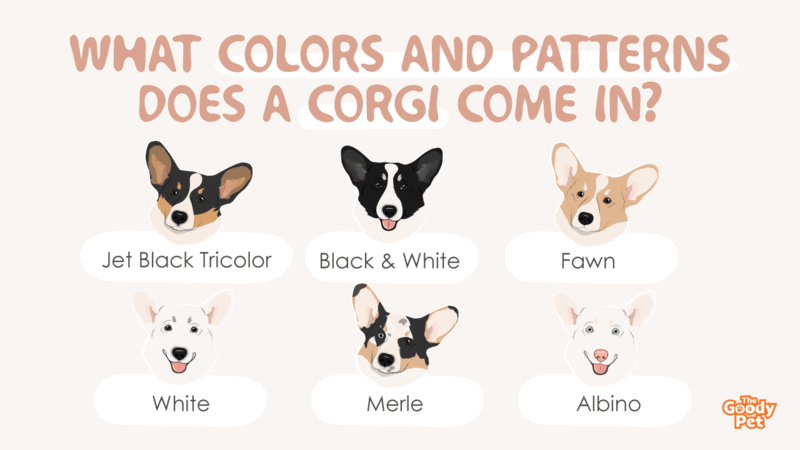Corgis are the very definition of beauties with brains with the adorably disproportional pooches ranking 11th on Stanley Coren’s list of the most intentional dog breeds. It is no wonder that they have captured so many hearts including Queen Elizabeth II’s.
When most people think of Corgis, they imagine a fawn and white pooch with medium length fur. However, there are so many different aesthetic variations of the Corgi.
Let’s take a look at 16 variations of these including the fluffy-haired Corgi and the albino white Corgi including how to identify them and what makes each variation of the Corgi unique.
16. Albino
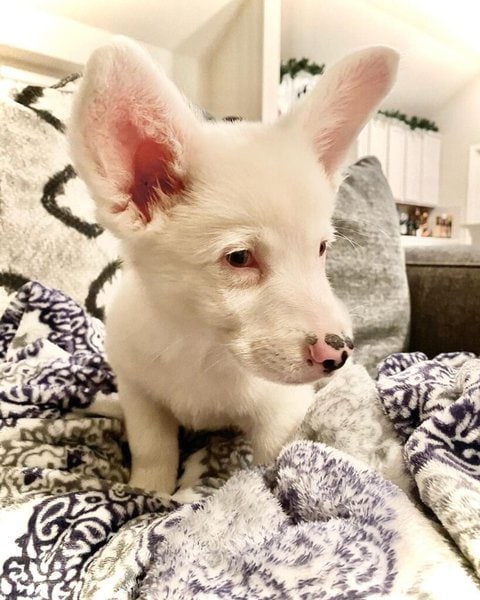
Contrary to popular beliefs, not all white Corgis are albinos. The Albino variety has a gene mutation that affects the dog’s ability to produce melanin.
As a result, it is not the coat alone that will have no pigment. In addition to the white fur, albino Corgis will also have blue eyes and a pink nose.
Albino Corgis are generally healthy. However, they are more prone to skin conditions like sunburn and skin cancer.
15. Sable
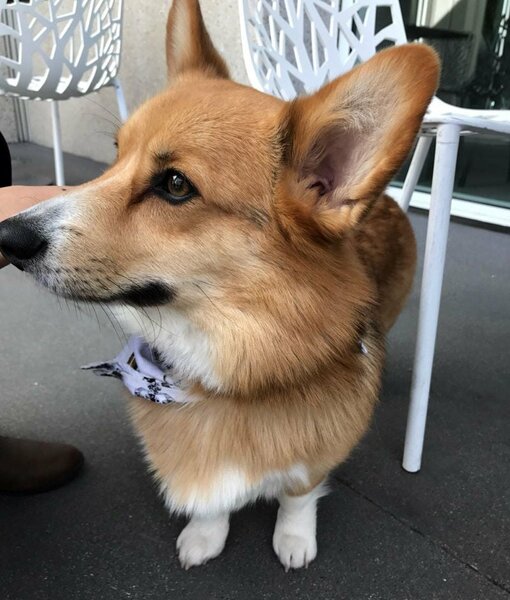
Sable Corgis have black tips on their fur strands. This character is best appreciated on red, chocolate, or fawn parts of the coat where the black tips create a beautiful color gradient. This may make them look like tricolor Corgis from a distance.
For sable Corgis that are regularly trimmed, this black tip marking character may not be very easy to appreciate.
Interestingly, the white parts of the coat on sable Corgis are completely spared and will have no tip markings.
14. Fawn

Fawn in Corgis is considered a standard solid coat color. It is essentially a lighter shade of red that resembles a light tan shade of brown.
Fawn Corgis usually have white markings on the face, neck, chest, lower abdomen, and the legs. The fawn part of the coat usually settles in a saddle-like pattern.
The Fawn Corgi variety is easily the most recognizable of the aesthetic variations of this popular dog breed.
13. Red
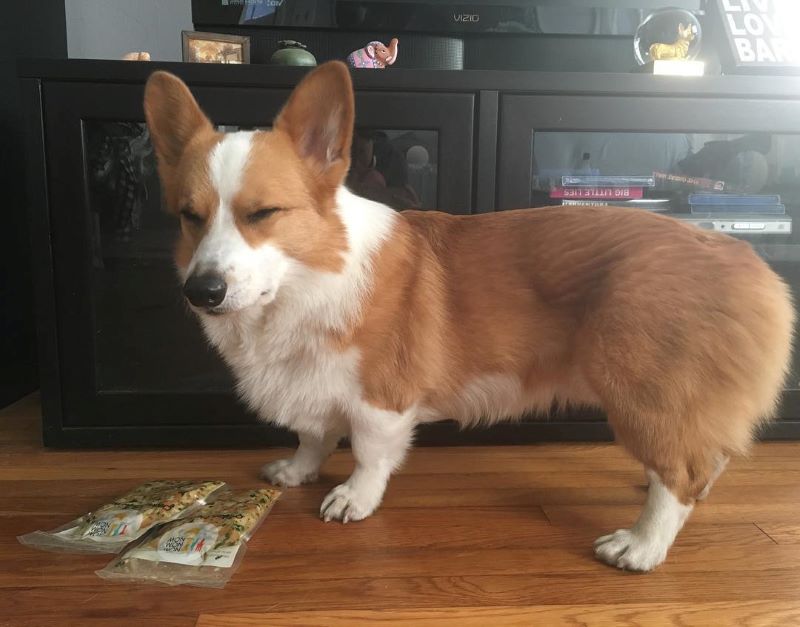
Red is one of the most common, acceptable colors of the Corgi dog breed. The fur is a dark shade of brown with reddish undertones that give the fur a rustic, copper brown aesthetic.
Like the fawn Corgi variation, Red Corgis will usually have white markings. These markings vary in extent but are usually limited to the snout, neck, chest, belly, and paws.
Red Corgis are popularly associated with Queen Elizabeth who has tens of this color variety of her favorite dog breed.
12. Black And White

The black and white Corgi, as the name suggests, has a combination of black and white fur. In standard presentations, black is the main color covering most of the coat. This black fur is more often than not distributed in a saddle pattern.
The white fur acts as markings present on the face, neck, chest, and paws.
If there is a third color marking, however small, disqualify the Corgi from being considered a black and white variety.
11. Jet Black Tricolor
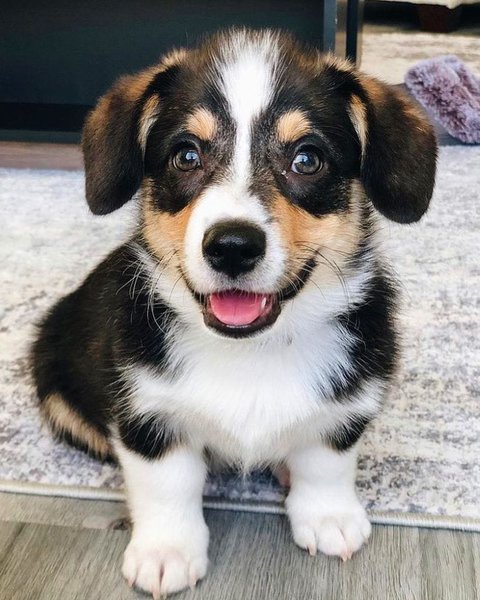
The jet black tricolor Corgi is one of the rarest variations of this dog breed. The coat has black as the predominant color covering the back and most of the dog’s head, limbs, and tail.
The black tricolor Corgi also has a combination of white and tan markings. The tan markings are usually immediately adjacent to the black part of the coat on the torso, legs, and face. The Corgi may also have a tan spot over each eye.
The white markings on the black tricolor Corgi can be found on the snout, neck, chest, belly, and paws.
10. Red Headed Tricolor
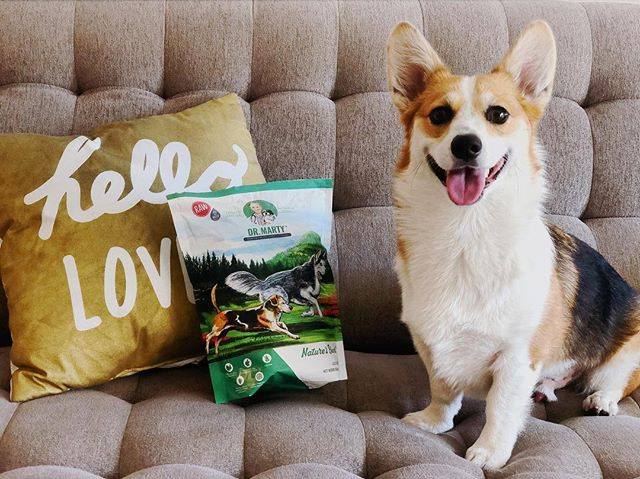
When it comes to the combination of colors, there is no difference between the red and the black tricolor Corgi. However, the proportions and distribution are what distinguish the two.
Red tricolor Corgis have red or a dark tan brown shade of fur as the predominant color. This color is also what covers most of the head and face with only a few white markings.
The black fur exists as a single, large patch on the back while the rest of the white markings are distributed on lower surfaces of the Corgi’s body like the belly and chest areas.
9. Mismarked Red
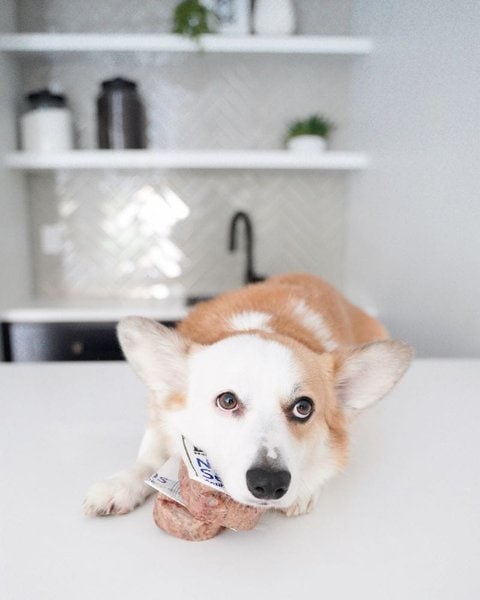
Mismarked Corgis are a variety where white fur appears on areas of the dog’s body that are considered non-standard for the markings. These include white fur appearing anywhere from the withers to the tail, above the elbows, or on the ears.
Mismarked red Corgis have this unwanted distribution of white fur paired with red fur. The red fur in this case may cover most of the coat with interruptions of white markings. It could also be the minority with white fur covering most of the body.
8. Blue Tricolor
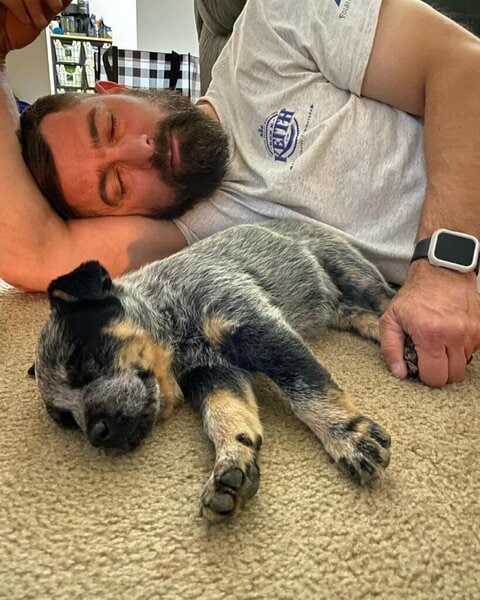
Blue tricolor Corgis are a variety of the black tricolor Corgi in terms of the marking colors and distribution. What makes the blue tricolor different is the fact that the main color is a diluted version of black fur that has a bluish-gray color.
This diluted, blue coat covers most of the Corgi’s body including the head. The rest of the body will have tan markings next to the blue parts and white markings on the face, neck, chest, belly, and paws.
7. White
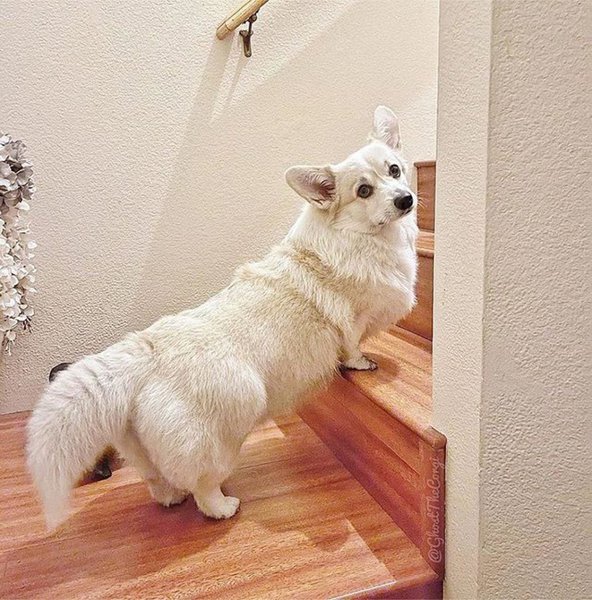
White Corgis have a purely white coat. Unlike albino Corgis, white Corgis have pigment in other surfaces of their bodies including on their nose, paw pads, and eyes.
White Corgis are usually purebred, but mixed breed with other white dogs are becoming more popular in the age of designer doggies.
White Corgis are often mistaken for whitely Corgis. The latter are a variation of the Corgi breed where white fur covers most of the coat and is marked with either black or tan fur.
6. Chocolate
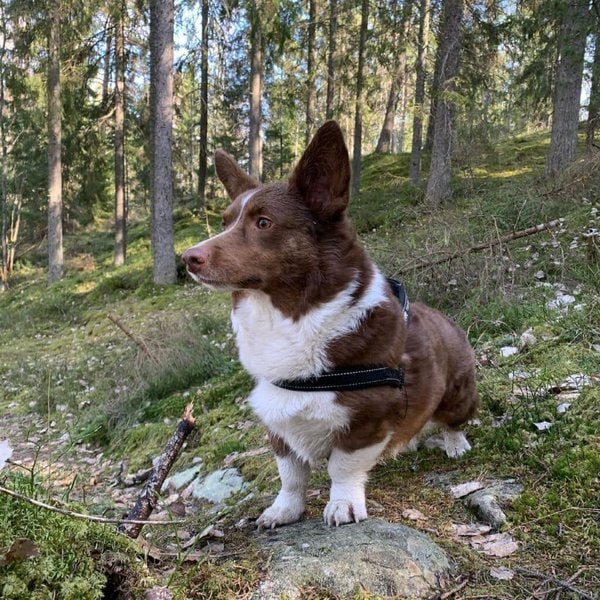
Chocolate Corgis have a mainly dark brown-colored coat with liver brown accents that give the dog their dark chocolate aesthetic. This fur covers most of the dog’s body especially the head, ears, tail, and the back and sides of the torso.
Something unique about the chocolate coat in Corgis is that it is considered a diluted shade. It is expressed as a result of the presence of a recessive dilution gene which dilutes black to a liver or chocolate shade.
5. Brindle
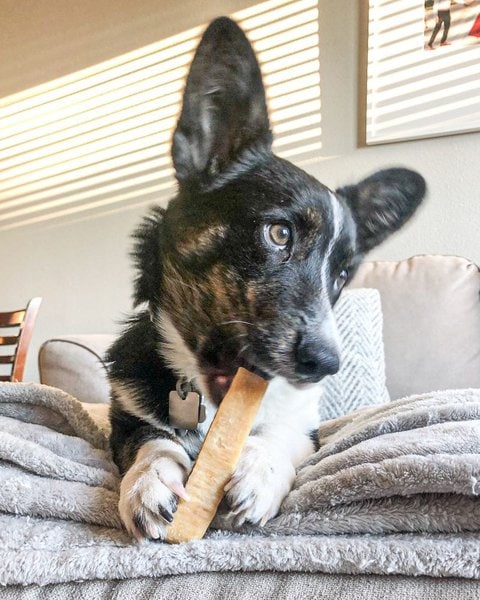
The brindle pattern on a Corgi creates a stripped tiger-like pattern. The main coat is black in color. This is interrupted by tan markings in a striped pattern.
The brindle pattern on a Corgi is best appreciated on large surfaces of the body with few featherings like the back and sides of the torso.
In addition to the stripe markings, the Corgi may also have white markings on the neck, chest, and belly.
4. Merle
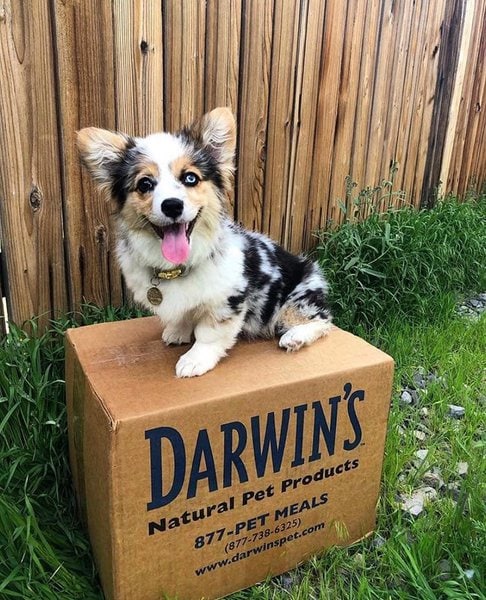
Merle Corgis have a series of randomly distributed mottled patches of red or black fur on a white or off-white coat. They may also have blue colored eyes especially with double merle Corgis where the Corgi is developed from breeding between two carriers of the merle gene.
Despite the unique and mystical aesthetic created by merle markings, this variety is considered very undesirable due to the eye and ear health issues associated with the mutation.
3. Blue Merle

Blue merle Corgis have 2 sets of rare genes responsible for the final coat markings. The first is the merle gene set that gives these Corgis their irregular, mottled markings as well as light-colored eyes.
The second is the dilution gene that dilutes black fur into a blue shade. The blue coat is what forms the mottled markings and is unlike the more solid black fur on the black merle Corgi variation.
2. Regular
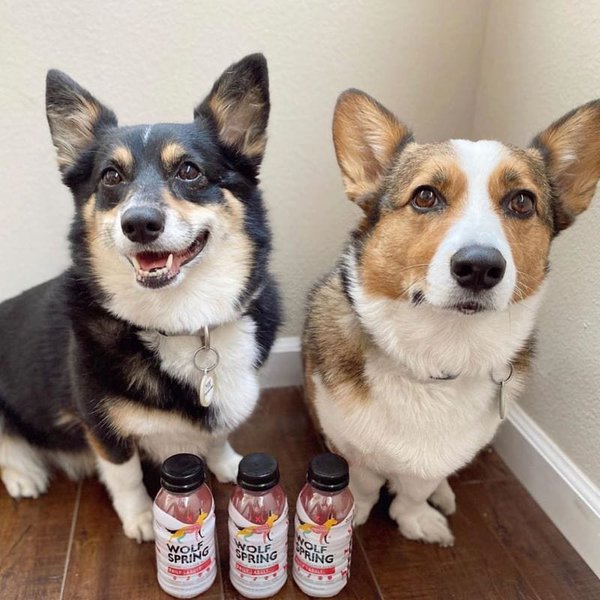
The regular coat type in Corgis is characterized by medium-length fur in a double layer that forms a very thick coat. The fur is also resistant to water and dust and shed minimally which makes regular-haired Corgis easier to take care of.
Regular-haired Corgis are the more common type of Corgis and get their medium-long coat from a dominant gene. This means only one copy of the gene from one parent is needed for the coat type to be expressed.
1. Fluffy
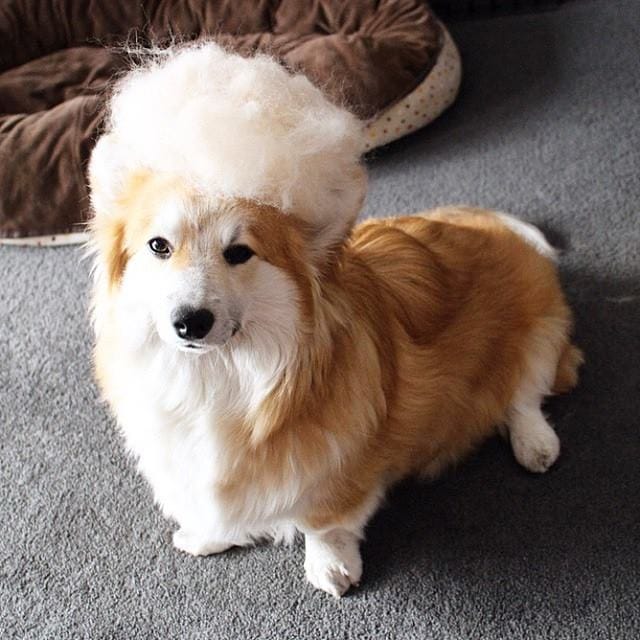
Fluffy Corgis have a longer and thinner coat than their regular counterparts. This fur is harder to maintain as it lacks the water-resistance and dust-resistance of the thicker regular Corgi coat type.
Corgis with the fluffy coat type also tend to have more exaggerated feathering around the neck and chest, from the ears, and on the legs.
The fluffy coat type in Corgis is from a recessive gene which makes them rare.
Related Questions
Are Tri-Color Corgis Rare? Tricolor Corgis are not rare at all. They can either be tricolor Corgis with a black head or with red as the main color on the head. The assumption that these doggies are rare comes from the fact that it is varieties like the red or fawn Corgis that are more commonly portrayed on social platforms and mass media.
Are Corgis Born With Tails? Corgis are born with naturally short tails. Most of them have their tails docked during their first few days of life. For Corgis that haven’t been docked, a tail length of 2 inches is considered acceptable according to the American Kennel Club standards. In some rare cases, the Corgi will be born with a tail that is naturally docked.
Will My Corgi Get Fluffier? It takes about 4 to 6 weeks from birth for a Corgi to develop the thick, fluffy coat that they are known for. Most of this growth is of the longer and more coarse outer layer of the double-layered coats. In some Corgis, feathering around the neck, ears, chest, and paws will also start to occur within the same 4 to 6 weeks.

